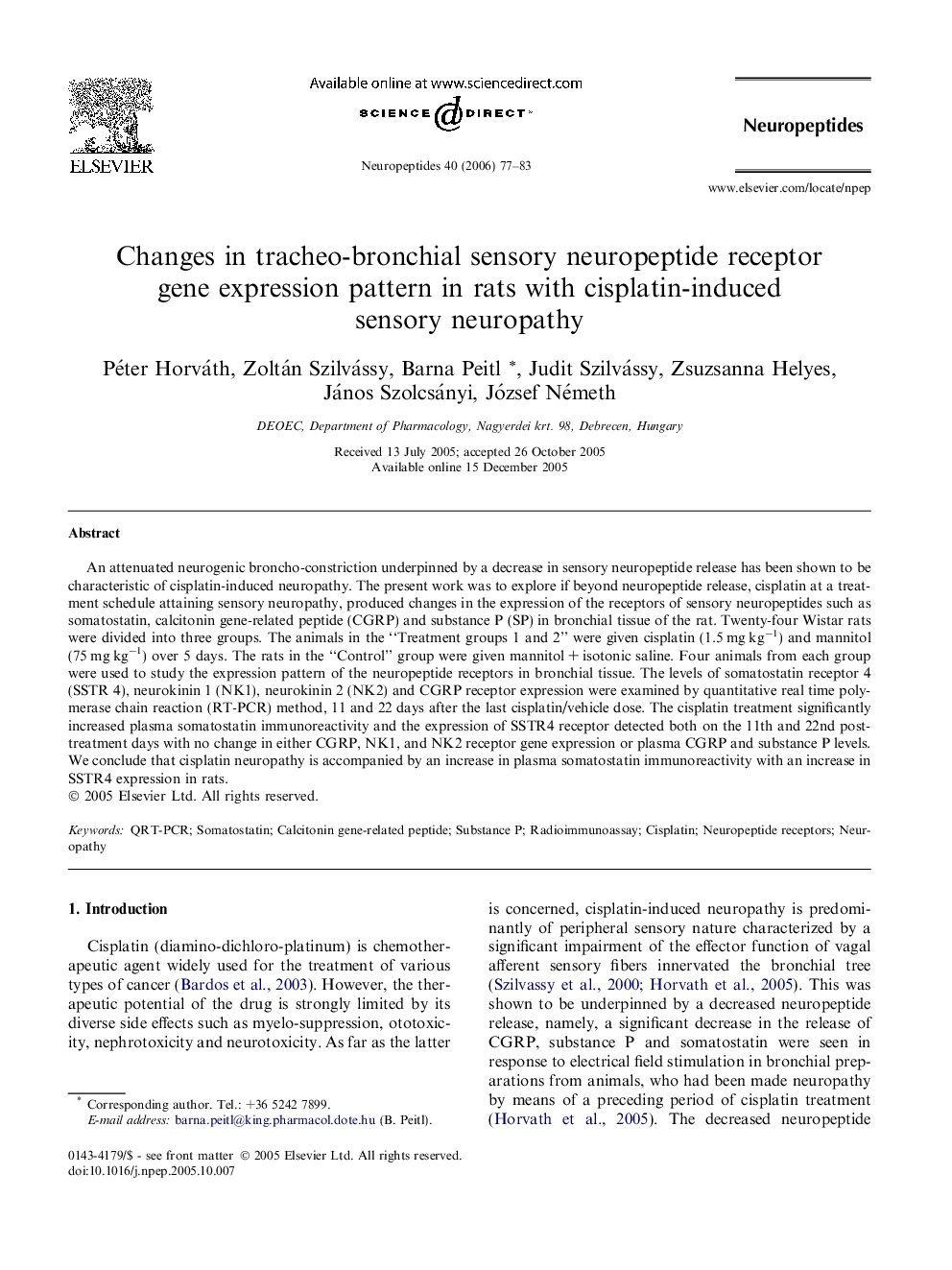| Article ID | Journal | Published Year | Pages | File Type |
|---|---|---|---|---|
| 2808472 | Neuropeptides | 2006 | 7 Pages |
An attenuated neurogenic broncho-constriction underpinned by a decrease in sensory neuropeptide release has been shown to be characteristic of cisplatin-induced neuropathy. The present work was to explore if beyond neuropeptide release, cisplatin at a treatment schedule attaining sensory neuropathy, produced changes in the expression of the receptors of sensory neuropeptides such as somatostatin, calcitonin gene-related peptide (CGRP) and substance P (SP) in bronchial tissue of the rat. Twenty-four Wistar rats were divided into three groups. The animals in the “Treatment groups 1 and 2” were given cisplatin (1.5 mg kg−1) and mannitol (75 mg kg−1) over 5 days. The rats in the “Control” group were given mannitol + isotonic saline. Four animals from each group were used to study the expression pattern of the neuropeptide receptors in bronchial tissue. The levels of somatostatin receptor 4 (SSTR 4), neurokinin 1 (NK1), neurokinin 2 (NK2) and CGRP receptor expression were examined by quantitative real time polymerase chain reaction (RT-PCR) method, 11 and 22 days after the last cisplatin/vehicle dose. The cisplatin treatment significantly increased plasma somatostatin immunoreactivity and the expression of SSTR4 receptor detected both on the 11th and 22nd post-treatment days with no change in either CGRP, NK1, and NK2 receptor gene expression or plasma CGRP and substance P levels. We conclude that cisplatin neuropathy is accompanied by an increase in plasma somatostatin immunoreactivity with an increase in SSTR4 expression in rats.
